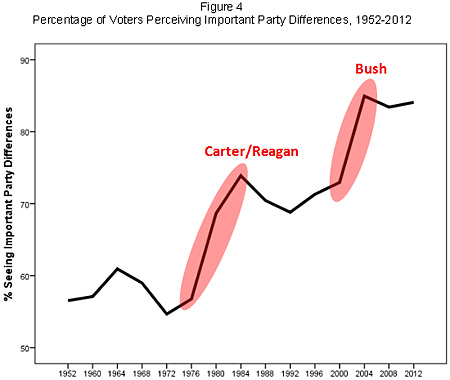Ezra Klein explains the power of the dark side today:
Abramowitz and Webster test a host of political characteristics to see what best predicts party loyalty. The real key, they found, was fear of the other party: “Regardless of the strength of their attachment to their own party, the more voters dislike the opposing party, the greater the probability that they will vote consistently for their own party’s candidates.”
It’s worth saying that a bit more clearly: you’re more likely to vote Democratic if you hate Republicans than if you love Democrats, and vice versa. What parties need to do to keep you loyal isn’t make you inspired. Rather, they need to make you scared.
Or, if Robert Heinlein is more to your taste than George Lucas: “If you are part of a society that votes, then do so. There may be no candidates and no measures you want to vote for, but there are certain to be ones you want to vote against.” That’s certainly true of me. Over my lifetime, the Republican Party has done far more to repulse me than the Democratic Party has done to appeal to me. But the result in the voting booth would be about the same either way.
Anyway, I don’t think this comes as much of a surprise to anyone. However, the chart below is interesting because it shows the proximate cause of all this polarization: Ronald Reagan and George Bush. Other presidents have little effect one way or another. This suggests either (a) Reagan and Bush were far more radical than other presidents, (b) Republican voters already hated Democrats so much that Clinton and Obama didn’t really have much impact, or (c) Democrats are awfully sensitive to losing power for a few years. I report, you decide.
UPDATE: Hmmm. I guess I should have gotten out a straightedge instead of relying on my tired old eyes. That first spike actually starts during Jimmy Carter’s term. So….apparently the Republican base got radicalized first, and Democrats picked up the ball later. Or something. I’ve corrected the chart.


















